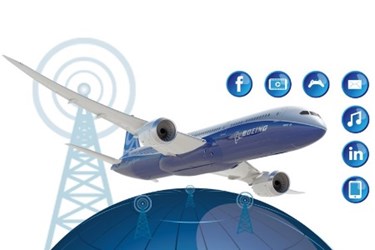The Global Connected Aircraft Market In 2015 Will Reach $1,851.8M

The importance of aircraft connectivity has arisen from the explosive growth in Wi-Fi enabled consumer electronic devices. People regard Internet connectivity as an essential requirement, including in an aircraft cabin. Although airlines have operated connectivity services since the beginning of the 21st century, the popularity of video streaming, and an overall increase in data usage from consumer electronics is putting pressure on bandwidth limits, making it necessary to find new ways of delivering high-speed Internet connections and increased data capacity to meet levels of quality and reliability that passengers would experience on the ground. Moreover, the demand for aircraft connectivity is shifting away from being a luxury enjoyed by business or first class travellers, to be accessed by everybody with a personal Wi-Fi enabled device. As a consequence, this study has calculated that the value of the global connected aircraft market in 2015 will reach $1,851.8M.
Satellite communications and air-to-ground (ATG) networks are the primary means of providing in-flight Internet connection to passengers. Improvements to satellite technology means that the capabilities exist to provide near global coverage and high-speed connections providing access to a reliable service for data streaming, surfing the web, sending and receiving e-mails and conducting business tasks to maximise their productivity. Satellite communications companies are supporting this with the development and launch of next generation satellites that utilise Ka-band frequency spectrum which can support higher quantities of data transmission. These developments are leading to new opportunities for airlines and original equipment manufacturers in enhancing in-flight entertainment & connectivity. For example, the capability of streaming IFE content to a personal device such as a tablet or smartphone. Services such as these improve the in-flight experience in terms of comfort and luxury for the passenger, and for the airline serve as a differentiator from competitors.
This 284 page report breaks the connected aircraft down by three submarkets. Furthermore, there are analyses of five regional markets and in-depth profiles of leading companies in aircraft connectivity. There are 135 tables, charts and graphs and details of 294 significant regional connected aircraft contracts & programmes.
This report obtained exclusive interviews with leading satellite communications company, Inmarsat, and QEST Quantenelektronische Systeme GmbH, a manufacturer of broadband antennas for civil aviation to underpin the forecasts and analysis.
Source: ASDReports.com
